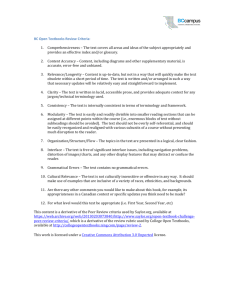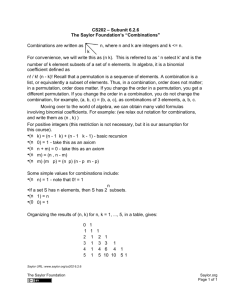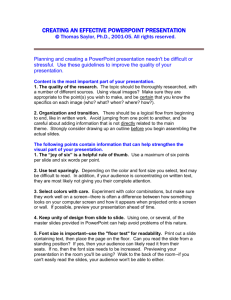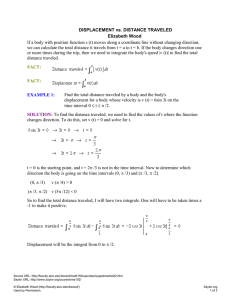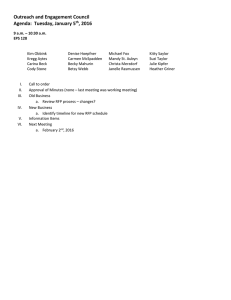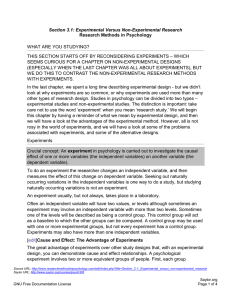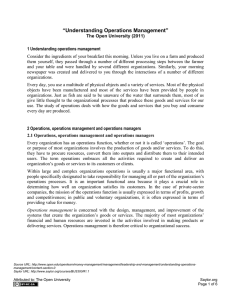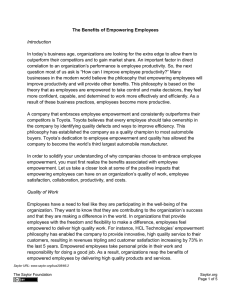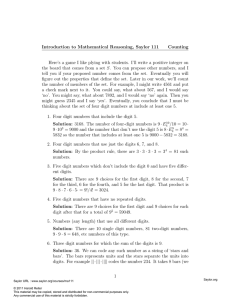Forces and Moments A force is a quantity that if left unchecked tends
advertisement
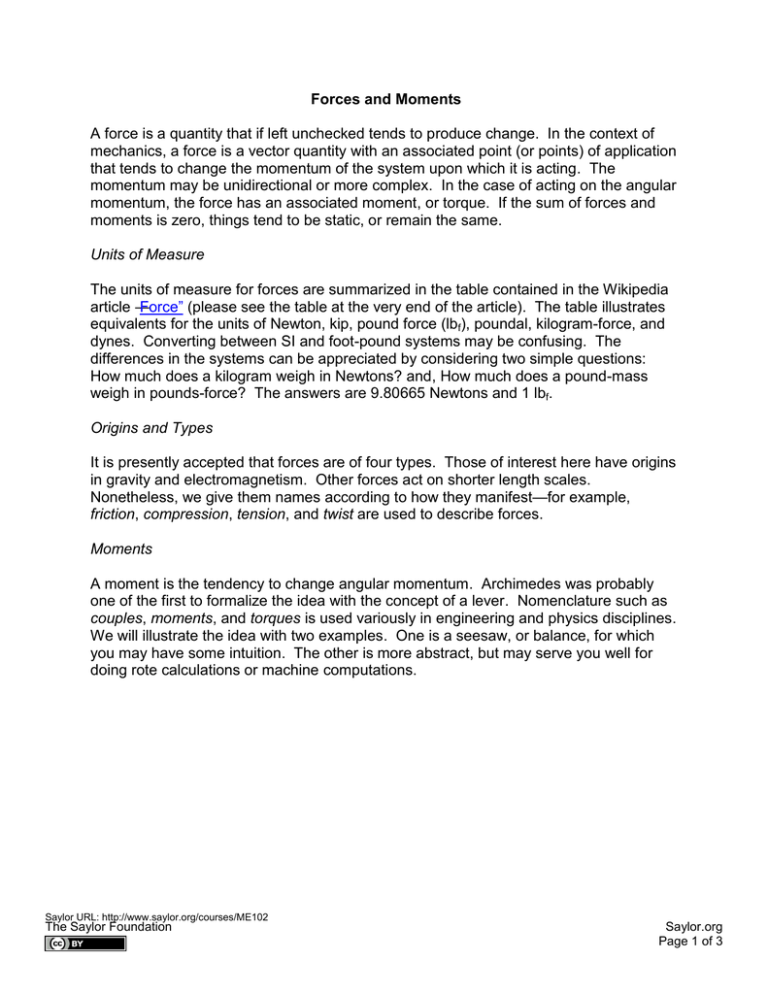
Forces and Moments A force is a quantity that if left unchecked tends to produce change. In the context of mechanics, a force is a vector quantity with an associated point (or points) of application that tends to change the momentum of the system upon which it is acting. The momentum may be unidirectional or more complex. In the case of acting on the angular momentum, the force has an associated moment, or torque. If the sum of forces and moments is zero, things tend to be static, or remain the same. Units of Measure The units of measure for forces are summarized in the table contained in the Wikipedia article ― Force‖ (please see the table at the very end of the article). The table illustrates equivalents for the units of Newton, kip, pound force (lbf), poundal, kilogram-force, and dynes. Converting between SI and foot-pound systems may be confusing. The differences in the systems can be appreciated by considering two simple questions: How much does a kilogram weigh in Newtons? and, How much does a pound-mass weigh in pounds-force? The answers are 9.80665 Newtons and 1 lbf. Origins and Types It is presently accepted that forces are of four types. Those of interest here have origins in gravity and electromagnetism. Other forces act on shorter length scales. Nonetheless, we give them names according to how they manifest—for example, friction, compression, tension, and twist are used to describe forces. Moments A moment is the tendency to change angular momentum. Archimedes was probably one of the first to formalize the idea with the concept of a lever. Nomenclature such as couples, moments, and torques is used variously in engineering and physics disciplines. We will illustrate the idea with two examples. One is a seesaw, or balance, for which you may have some intuition. The other is more abstract, but may serve you well for doing rote calculations or machine computations. Saylor URL: http://www.saylor.org/courses/ME102 The Saylor Foundation Saylor.org Page 1 of 3 Example Two masses are placed on a balance. The fulcrum is located at x = 0. Mass 1 is located at x = a. Mass 2 is located at x = b. The fulcrum must bear the force of the total mass times the acceleration of gravity. However, in order for the balance, or seesaw, not to twist about the fulcrum, the moments must balance. In this example, the calculation of moments proceeds as MW1 = a g W 1, MW2 = b g W 2. In order for the balance to be stable, the sum of the moments must be zero. The act of balancing equates moments, and hence a/b = W 2/W 1. Saylor URL: http://www.saylor.org/courses/ME102 The Saylor Foundation Saylor.org Page 2 of 3 Example A force f acts at a point m. We wish to calculate the moment M of that force about the point r. We first calculate the vector R as ((m1-r1)i + (m2-r2)j + (m3-r3)k. The moment M is then given by the cross product of R with f. Hence, M = ((m2-r2)f3 – (m3-r3)f2) i + ((m3r3)f1 – (m1-r1)f3)) j + ((m1-r1)f2 – (m2-r2)f2) k. Note that the sign is important but arbitrary. Saylor URL: http://www.saylor.org/courses/ME102 The Saylor Foundation Saylor.org Page 3 of 3

